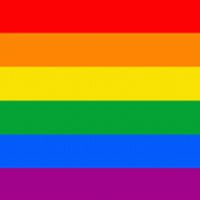Transgender 2006

©2006, 2013 by Dallas Denny
Source: Denny, Dallas. (2006). Transgender 2006. LGBT World website.
In the mid-2000s I was approached by the principals of the soon-to-be-launched LGBT World website (probably no relation to today’s site of the same name) and asked to write a monthly column. I produced this piece (which was geared toward a general audience) and then four others, but the site went nowhere and I never received the promised renumeration.
Transgender 2006
By Dallas Denny
Over the past decade transgender issues, identities, and politics have come into prominence, both within gay and lesbian communities and in the straight world. Gay-Lesbian-Bisexual has become Gay-Lesbian-Bisexual-Transgender—but just what does that mean?
I’ll be talking about transsexual and transgender issues in future columns on this website, but first, an introduction.
Perhaps the most productive way of thinking about the term transgender is as a contraction of “transgressively gendered.” Transgendered persons transgress— violate—society’s gender norms. This is pretty easy to do, since the larger society has all sorts of expectations about the way we should look and behave, including the way we dress and wear our hair, the way we walk and talk, the jobs we have, the gender of our friends, and the people to whom we are sexually attracted. If we violate these norms—and almost everyone does at some time and in some way or another—we transgress gender; we become gender outlaws.
When Amelia Bloomer wore pants in the 1850s, she was violating gender norms. When pro football player Rosie Grier took up needlepoint in the 1970s, he was violating gender norms. When Shannon Faulkner enrolled in the all-male Citadel academy in Charleston, South Carolina in the 1990s, she was violating gender norms. When gay and lesbian people take same-sex partners, they violate gender norms. And when transgendered people wear the clothing of or behave like members of the “other” sex, they violate gender norms.
Does this mean that we all—or most of us, anyway—are transgendered? In one sense, yes. That doesn’t mean we are crossdressers or transsexual, only that at some time most of us find ourselves uncomfortable with some aspect of the binary gender norms that constrict our ability to express ourselves. Those who feel most stifled by the arbitrary rules of gender—the most profound of the gender outlaws—are the people we usually think of when we see the term transgender.
It’s worthwhile to note that large numbers of men and women have been rebelling against gender norms for centuries. It is because of this that the rules of gender have changed . Consider that before 1920 women didn’t have the right to vote. They were expected not to pursue higher educations or careers, but to marry well, stay at home, and raise children. If they appeared in public in pants, they were subject to arrest and ridicule in the newspapers. Today, women—at least in the West—can vote, pursue higher educations, hold high-paying and prestigious jobs, cut their hair short, wear trousers, refuse to marry, and appear in public without makeup—all without fear of sanction. These changes happened only because thousands and tens of thousands and hundreds of thousands of women challenged the norms that limited their personal freedoms.
The gender rules which govern men haven’t loosened as much (perhaps because males had so much privilege to begin with), but they have indeed changed, and continue to change. Just 50 years ago, long hair in men was unheard of, and earrings unthinkable.
Gay men and lesbians have been stifled by gender norms also, and big time. Why? For the same reason—they violated social expectations for how they should behave, predicated on their sex.
Much has changed, thank your higher power—but there is much yet to do. And to do that, those of us on the frontiers of gender—and by that, I mean not only transgendered and transsexual people, but gay men and lesbians—need to understand one another and appreciate our similarities and differences and to understand that we are, all of us, just looking for the best way to be ourselves.
